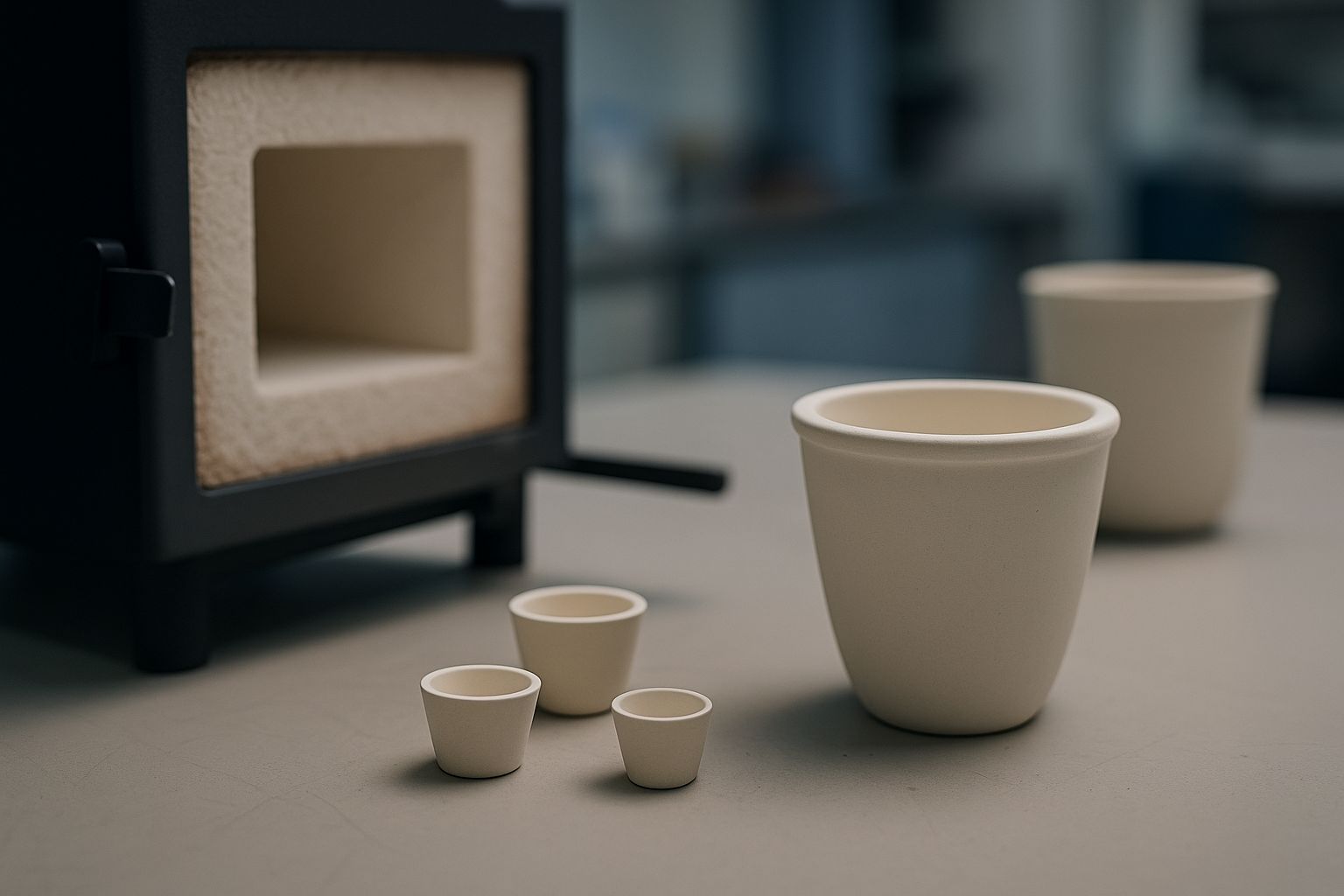Your cart is empty.
shop now
Your cart is empty.
shop now
Many materials change at temperatures above 1000°C. Labs need precise tools to study these changes without error or breakdown.
High-temperature analysis crucibles let scientists test how materials act under extreme heat. They are necessary for accurate results in material science research and industry testing.

When I work with new materials, I see how the right crucible can make or break a test result. Their stability at high temperatures matters not just in experiments, but also later in production. Next, I’ll share how these crucibles connect to different scientific and industry needs.
Researchers often face trouble testing complex materials under heat. Without the right crucibles, data can be wrong and experiments might fail.
High-temperature crucibles are used for methods like TGA, DTA, and DSC. These techniques help measure how materials lose mass or gain heat during testing.
In my everyday lab work, I depend on these crucibles for tests that run at 400°C to above 1600°C. Their main use is for thermal analysis, where I track physical and chemical changes.
I often rely on platinum, alumina, or silica crucibles because they stay strong and do not react with most samples.
Here is how these crucibles match common testing methods:
| Testing Method | Crucible Material | Max Temperature (°C) | Main Use |
|---|---|---|---|
| DSC | Aluminum, Platinum | 650–1600 | Heat flow & phase transitions |
| TGA | Alumina, Platinum | 1400–1600 | Mass loss during heating |
| DTA | Alumina, Silica | 1400+ | Detecting chemical transitions |
Choosing the right crucible keeps data clear. It also protects the heating system from sample reaction and breakdown. Source: ScienceDirect
Aerospace research brings extreme heat and fast temperature shifts. Many common containers melt or crack under these loads.
High-temperature crucibles give steady results for tests on alloys, composites, and ceramics. These tests are key for new engine and space materials.
I see many labs use platinum crucibles for rocket and jet part tests. Platinum resists heat, does not rust, and allows repeated use. Alumina is a top choice for ceramic composites. These crucibles help capture every small change in weight or shape as materials move through fast temperature ramps.
Here’s a comparison of crucibles often used in aerospace:
| Material | Heat Resistance | Main Aerospace Application | Reusability |
|---|---|---|---|
| Platinum | Very High (up to 1700°C) | Turbine, rocket engine parts | Excellent |
| Alumina | High (up to 1650°C) | Ceramic matrix tests | Good |
| Silica | Medium (up to 1100°C) | Glass component testing | Fair |
Reliable crucibles let engineers confirm new high-temperature materials are safe for space, jet, or satellite use. Reference: NASA Materials Research
Many chemicals and polymers break down only when heated to high temperatures. Labs need the right crucible to avoid errors or damage during these studies.
Crucibles stop sample loss and keep results repeatable in mass loss and phase shift tests during polymer or chemical checks.
I use platinum or alumina crucibles when testing plastics and specialty chemicals at 800°C to 1600°C. These containers stop reactions with the test sample and keep outside gases away during study. My tests show that poor-quality or mismatched pans often lead to false data or failed trials. Here’s a reference table for polymers and chemicals:
| Sample Type | Best Crucible Material | Temperature Range (°C) | Reason for Choice |
|---|---|---|---|
| Polymer Blends | Platinum, Alumina | 600–1600 | No sample reaction, high purity results |
| Catalyst Testing | Platinum | up to 1700 | Stable, no contamination |
| Specialty Chemicals | Alumina, Silica | 400–1400 | Low risk of chemical side reactions |
The right crucible keeps the thermal analysis process free of contamination and supports strong, scientific results. More at: ScienceDirect - Crucible
Modern industry relies on careful testing in labs. Many sectors could see big losses if analyses go wrong from poor crucible quality.
High-temperature crucibles support aerospace, automotive, chemical, and energy fields. They also help in glass making, research, and advanced ceramics.
In my experience, companies test everything from airplane metals to new battery materials with these crucibles. Below is a summary of where and how these tools support industry:
| Industry | Crucible Use | Typical Test | Material Demand |
|---|---|---|---|
| Aerospace | Alloy, Composites | Melting point, DTA | Platinum, Alumina |
| Automotive | Engine, Exhaust | TGA, durability | Alumina |
| Chemical | Catalyst, Polymer | TGA, reactions | Platinum, Alumina |
| Energy | Battery, Fuel cell | TGA, phase transitions | Alumina, Silica |
Careful choice of crucibles brings real value to each stage—from research to field use. Source: ResearchGate
High-temperature analysis crucibles are vital tools in material science. They keep tests stable, precise, and reliable, from research labs to major industries.
Contact REDTHERMO Technical SupportTechnical support email: